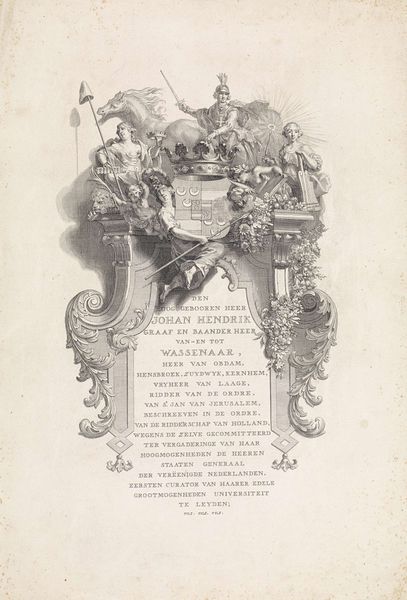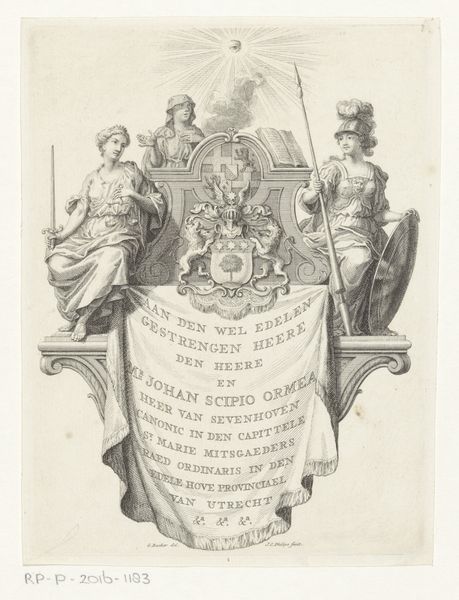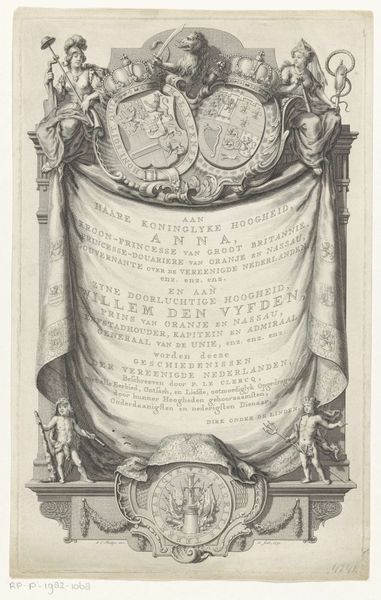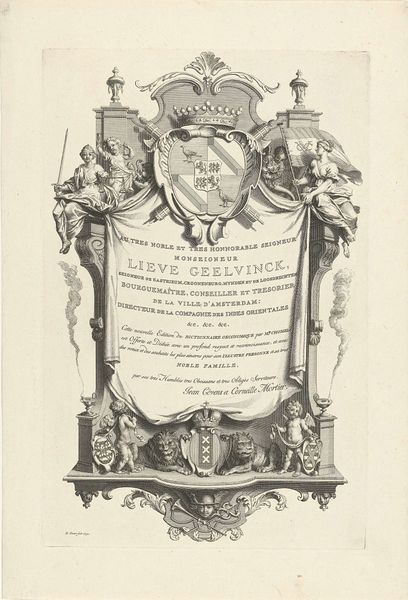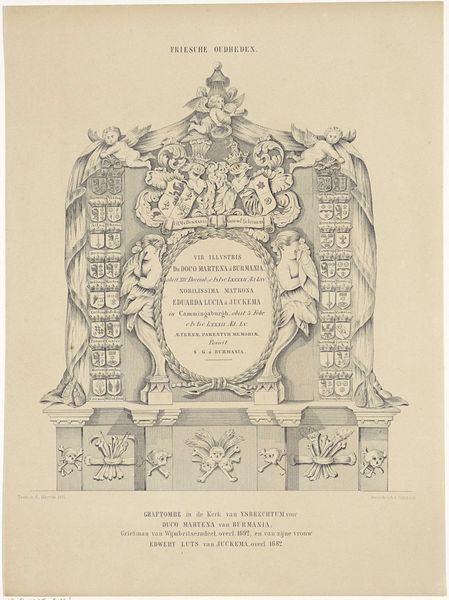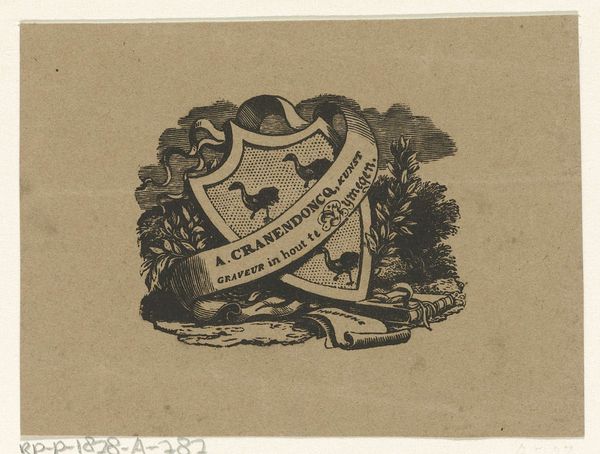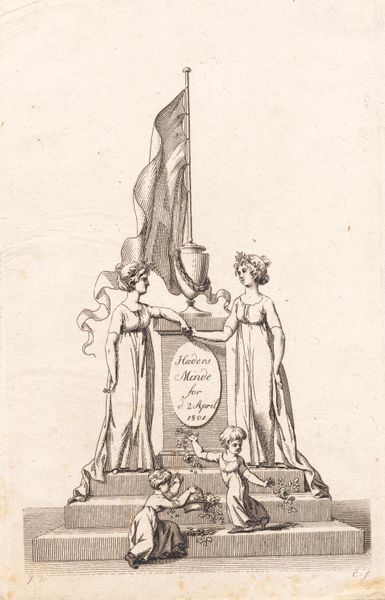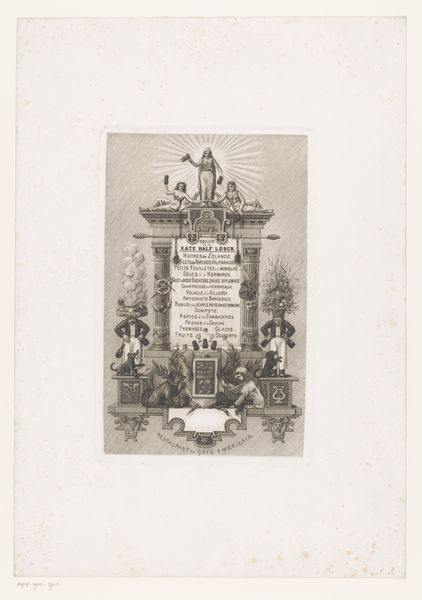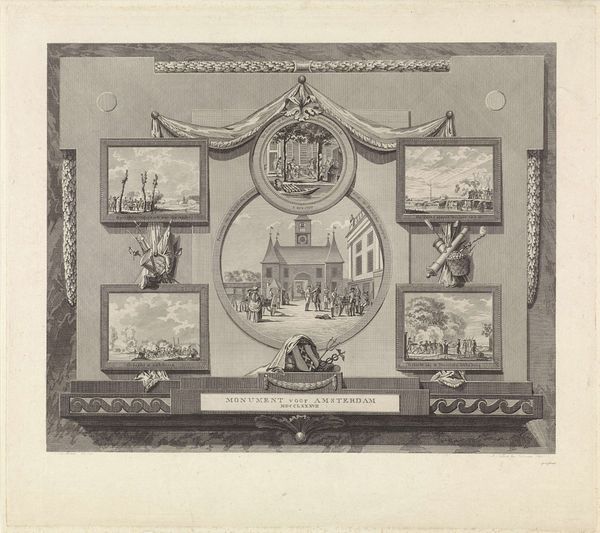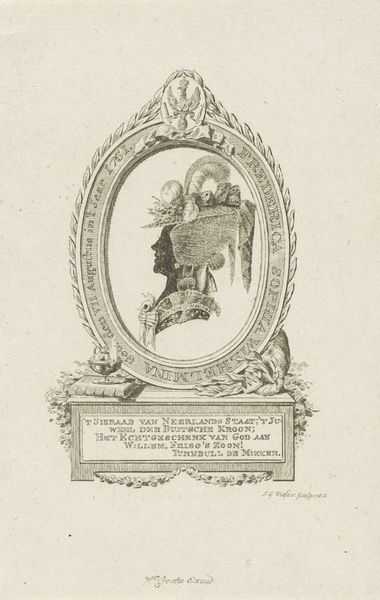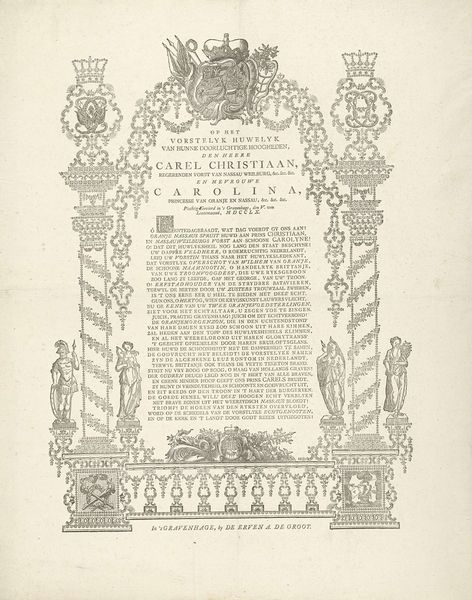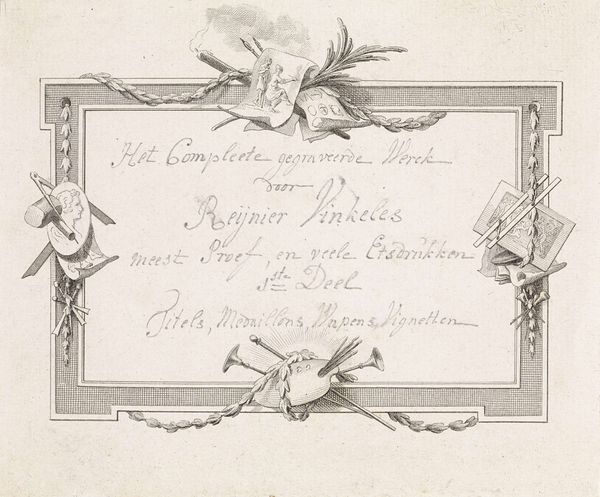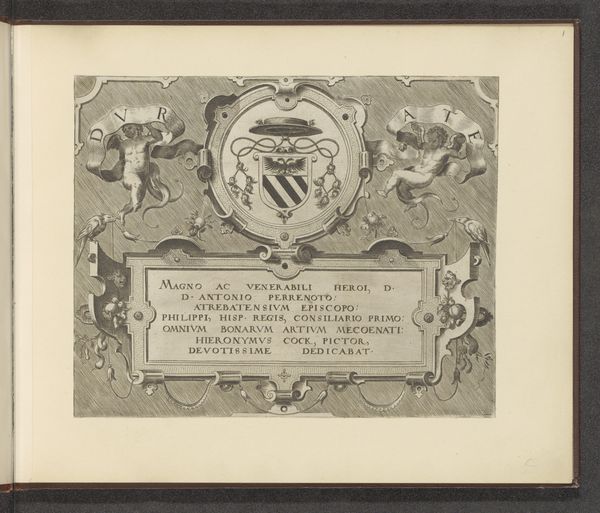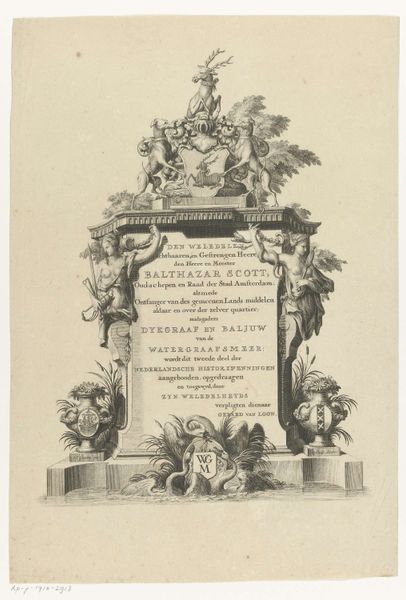
print, engraving
#
portrait
#
allegory
#
baroque
# print
#
engraving
Dimensions: height 406 mm, width 243 mm
Copyright: Rijks Museum: Open Domain
Curator: The Rijksmuseum holds this engaging print by Jan Punt from 1739. It's entitled "Draperie met het wapenschild van Johannes Scipio Ormea" – or, "Drapery with the coat of arms of Johannes Scipio Ormea" - crafted using engraving. Editor: Immediately, I'm struck by its rather elaborate, almost theatrical composition, reminiscent of Baroque stage design. It’s filled with figures that seem both celebratory and solemn, rendered entirely in grayscale, lending it a sense of age and gravitas. Curator: Precisely. The design, formally, is rigidly symmetrical. We see the central heraldic shield of Ormea surrounded by allegorical figures. On either side we have draped figures, seemingly Justice with her sword, and perhaps Wisdom or Faith, holding an open book, creating a strong, balanced framework. Editor: Symbolically, this piece is dense! The shield bearing a solitary tree likely refers to the Ormea family's origins or perhaps their aspirations for growth and prosperity. The two cherubic figures might indicate divine favor. But there is so much Latin text within the 'drapery’ which suggests its allegorical purpose as honorific for a learned and noble patron. Curator: The lettering is itself an important compositional element. The various typefaces and their arrangement add visual hierarchy and textural richness, functioning as more than just text—they become part of the artwork’s structure. Editor: It does act as both sign and signifier. Consider the radiant light source at the crest—this symbol often represents enlightenment or divine grace. Together with the allegorical figures and the detailed inscription, it projects the esteemed virtues and status of Ormea. It tells us that the patron was viewed in heroic and noble terms. Curator: It's important not to view these elements simply as adornment. The lines, the distribution of light and shadow, even the textures created by the engraving technique, all contribute to the overall sense of structured reverence and considered symbolic density. Editor: So ultimately, this artwork reflects the Baroque fascination with spectacle as much as the commemoration of personal and familial identity. The emblems work in harmony, speaking to 18th century concepts of legacy. Curator: A fascinating glimpse into the formal language and its rich encoding of Baroque ideals. Editor: A testament to how art visually reinforces established cultural order, and its projection of desired values through iconography.
Comments
No comments
Be the first to comment and join the conversation on the ultimate creative platform.
